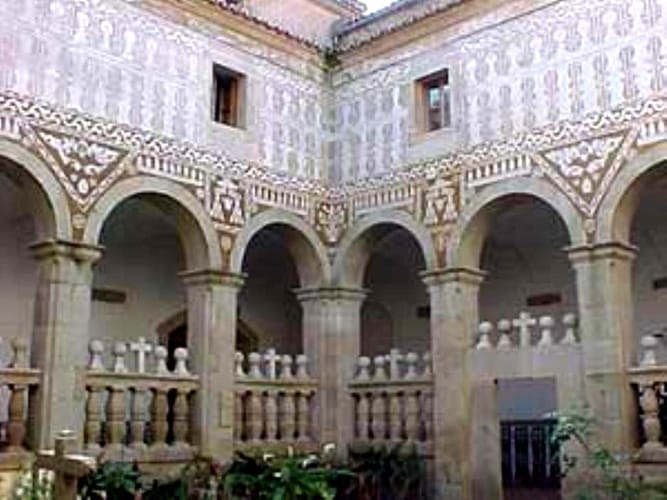Extremadura is the southwestern region of Spain that borders Portugal. It is composed of the provinces of Caceres and Badajoz. Even though, at present, the Augustinian Recollects do not have any house there, it is one of the historical sites of the Order. For more than 300 years there had been five convents of friars, which were all suppressed in 1835.
Of the five Extramaduran convents, three remain at present. The best-preserved is the convent of Valdefuentes, at the southern part of the province of Caceres, in the sierra of Montánchez. Its titular is Saint Augustine, and it was founded in 1634, financed by the marquis of Valdefuentes, Don Alonso de Alencastro. For its nearly three centuries of existence, it hosted a community of more or less 25 religious.
“Escorial Chico”
Both the convent and the annexed Church have been preserved. The latter has been made a parish church, while the convent is now used as a residence of the parish priest, a police station and a prison, a residence of senior citizens and a bar. But what is important is that the basic structure has not been changed and the structure as a whole is well preserved, most specially the cloister, the cistern and the rooms adjacent to the choir.
The convent of Saint Augustine is one of the monuments of this town with 1,500 inhabitants, who consider and call it “Escorial Chico.” Moreover, they have made it as an emblem of the town and of the entire decorative technique, the sgraffito, which is also used in some other buildings of the area. The Municipality of Valdefuentes, even tries to have the place recognized as the regional capital of the sgraffito, and for this purpose, at the beginning of last March, it invited some representatives from the Association of Tourism Journalists.
A Moorish Influence
 Detail The sgraffito is an ancient decorative technique, which gained much success in this place possibly by Moorish influence. It allows an easy application of the color, covering the wall with two overlapping layers, each having a different color. The motif of the decoration is drawn on the external layer, which is made to appear “sgraffiando,” i.e. scrapping the exterior layer to make the second layer visible.
Detail The sgraffito is an ancient decorative technique, which gained much success in this place possibly by Moorish influence. It allows an easy application of the color, covering the wall with two overlapping layers, each having a different color. The motif of the decoration is drawn on the external layer, which is made to appear “sgraffiando,” i.e. scrapping the exterior layer to make the second layer visible.
A good part of the walls of the convent, including the Church, has been decorated using this technique. And so through this, the Augustinian insignias were made possibly at the end of the XVII century, which go through the cloister just above the starting point of the stone arcs. There the heart pierced by two arrows under a hat with its tassels is represented. This symbol has always characterized Saint Augustine. And, in alternating arrangement with this insignia, is another Augustinian symbol, the episcopal miter.


